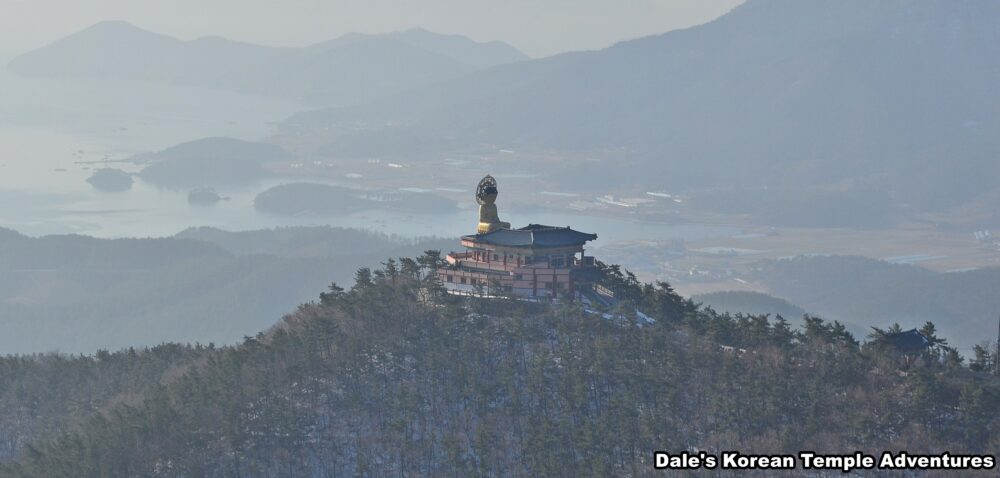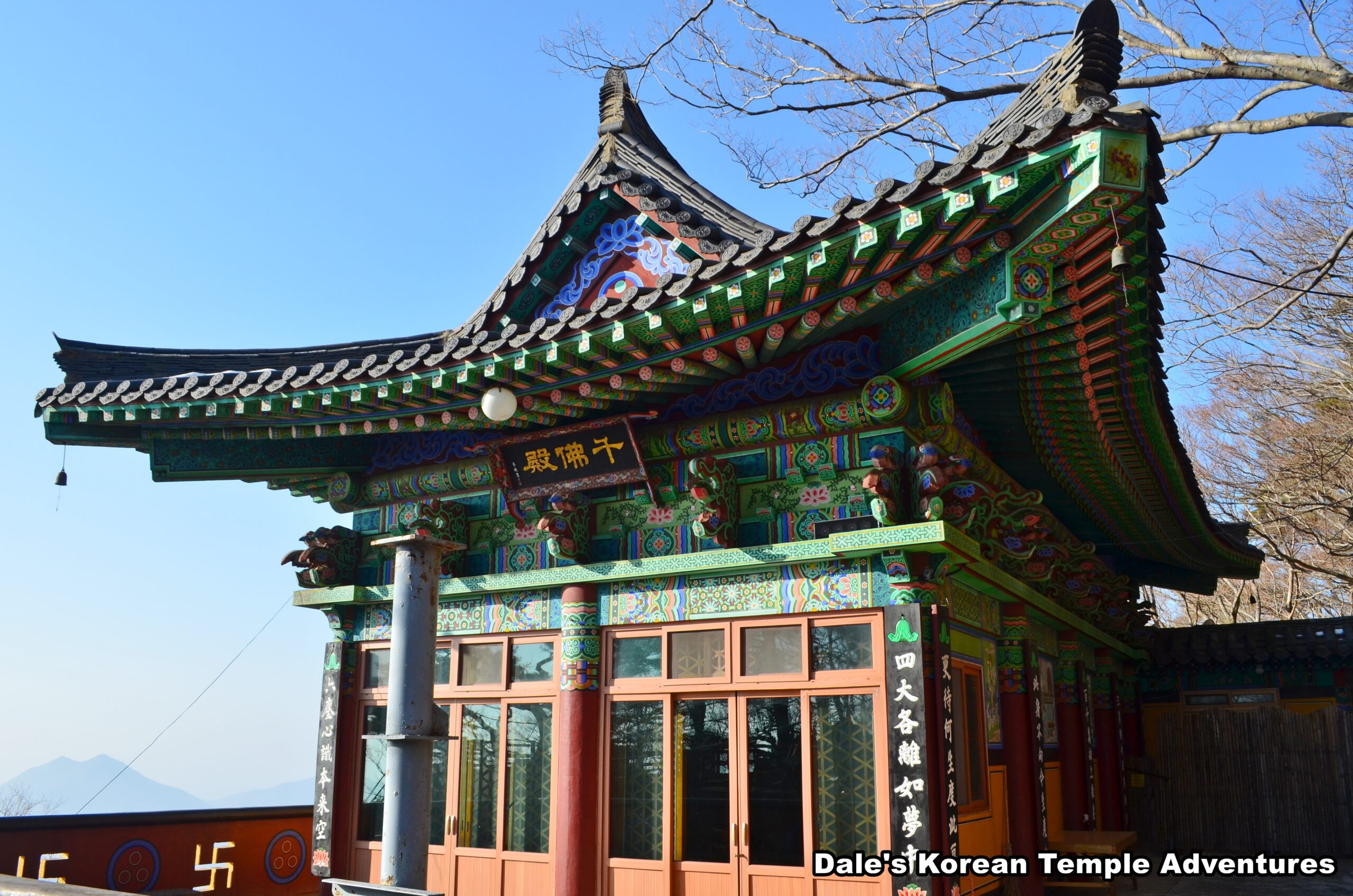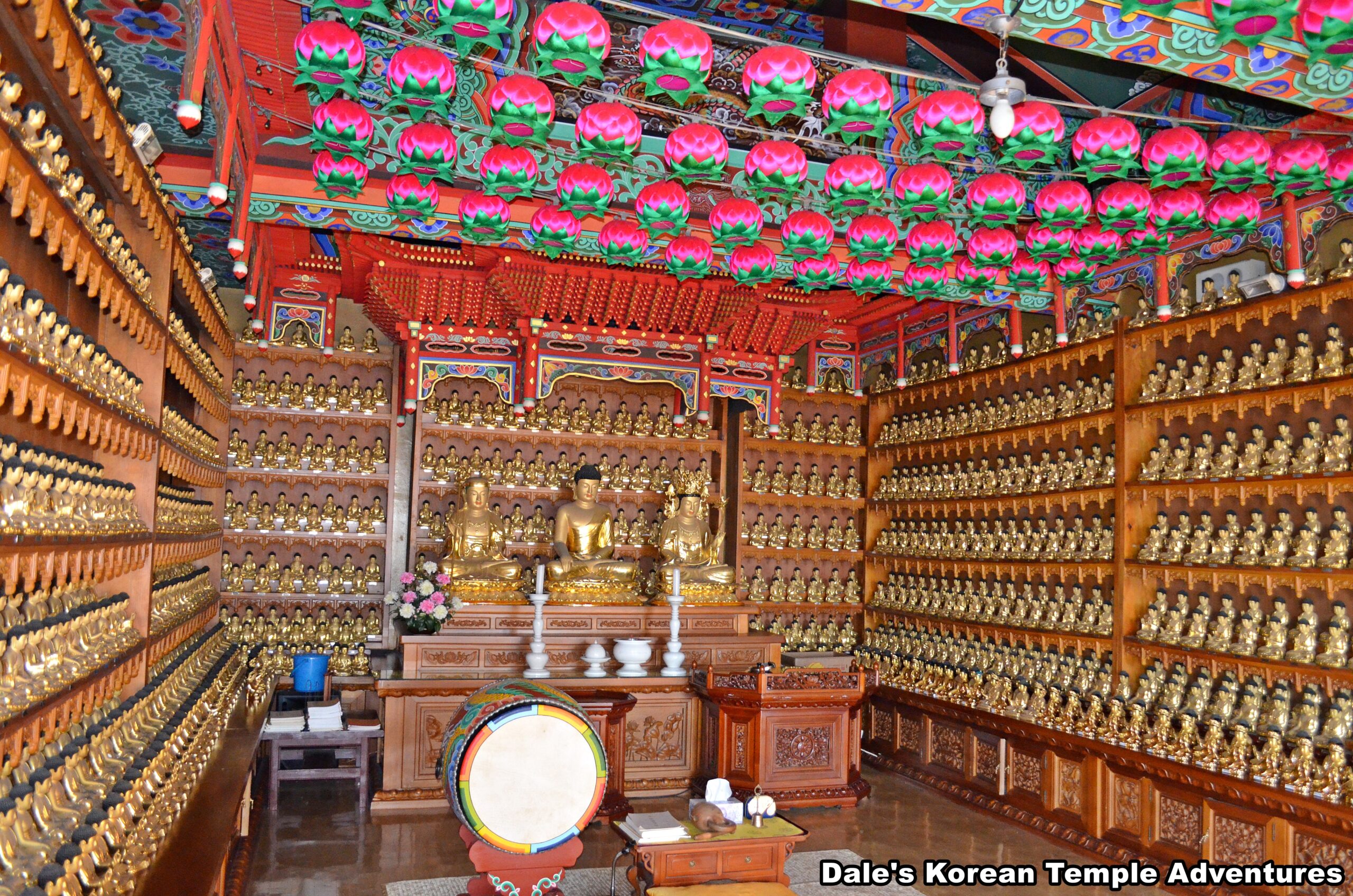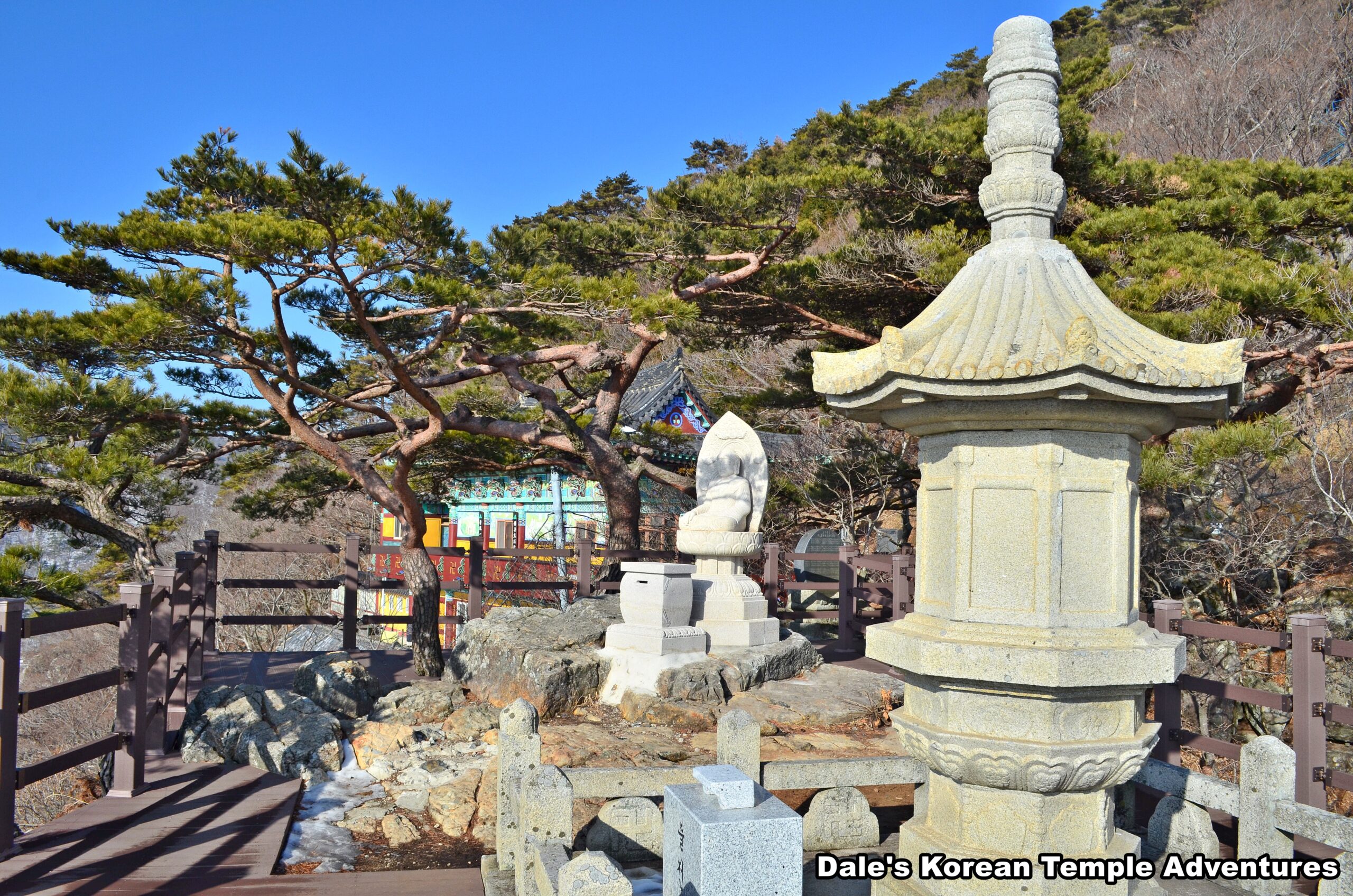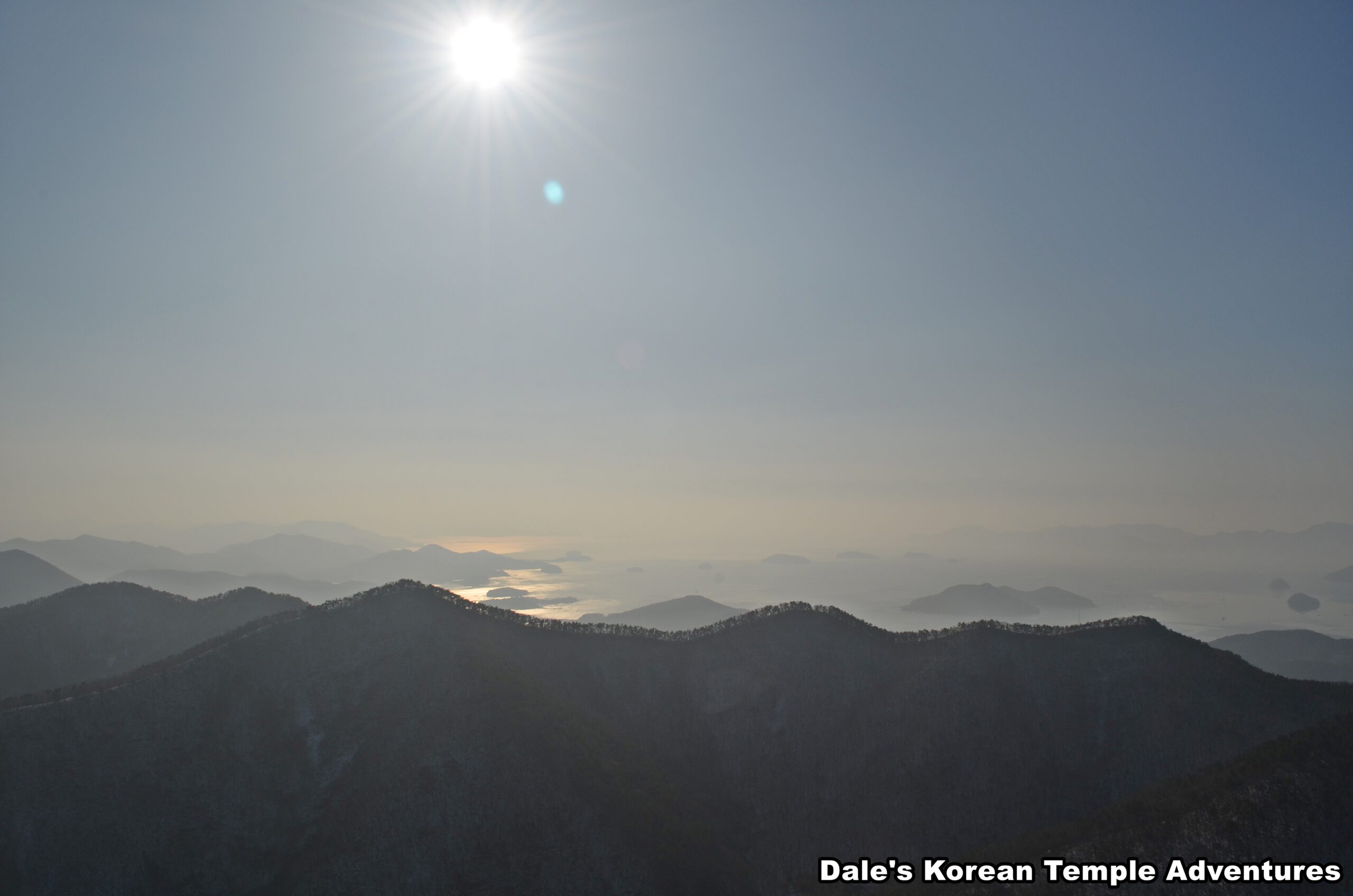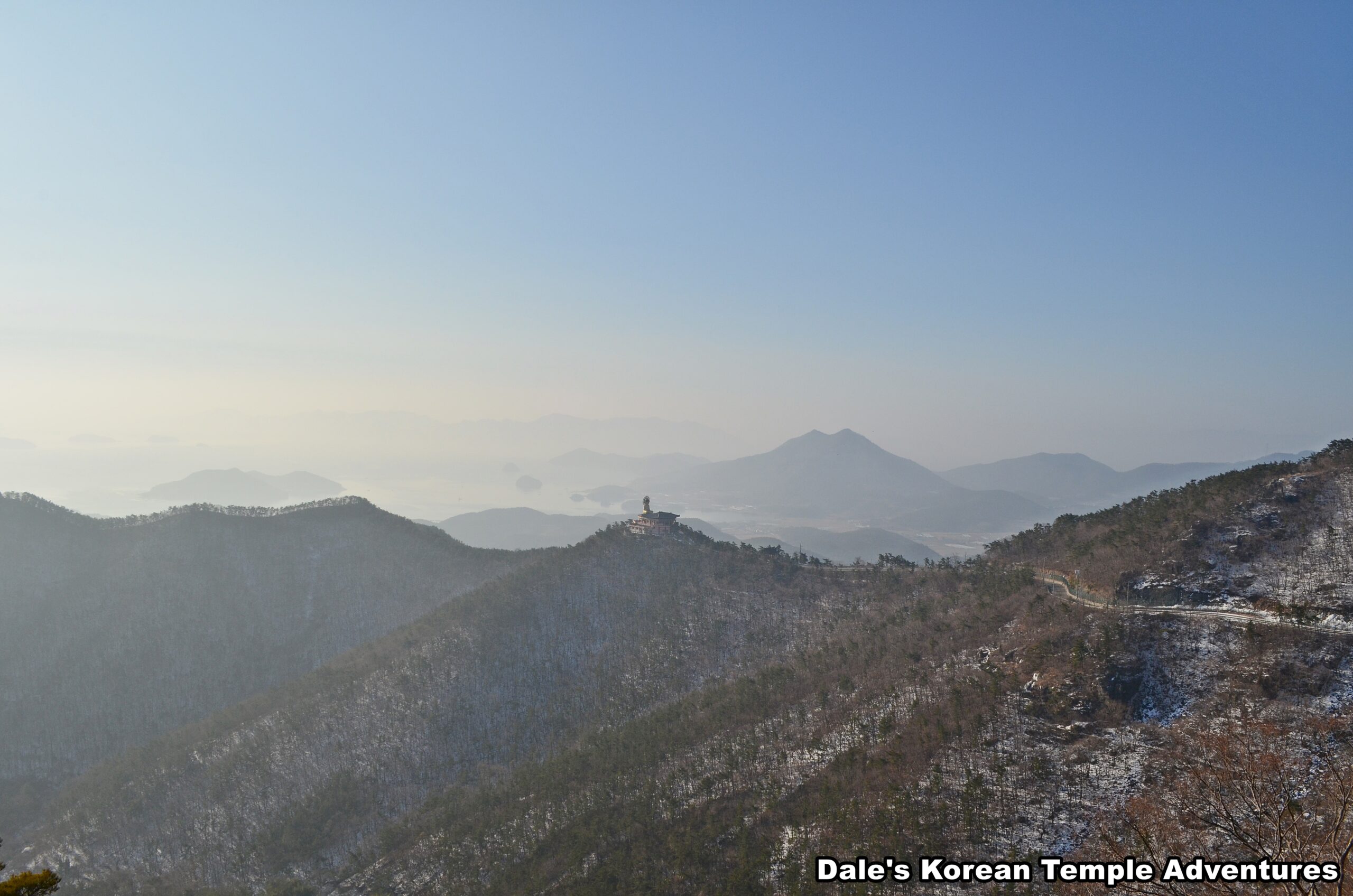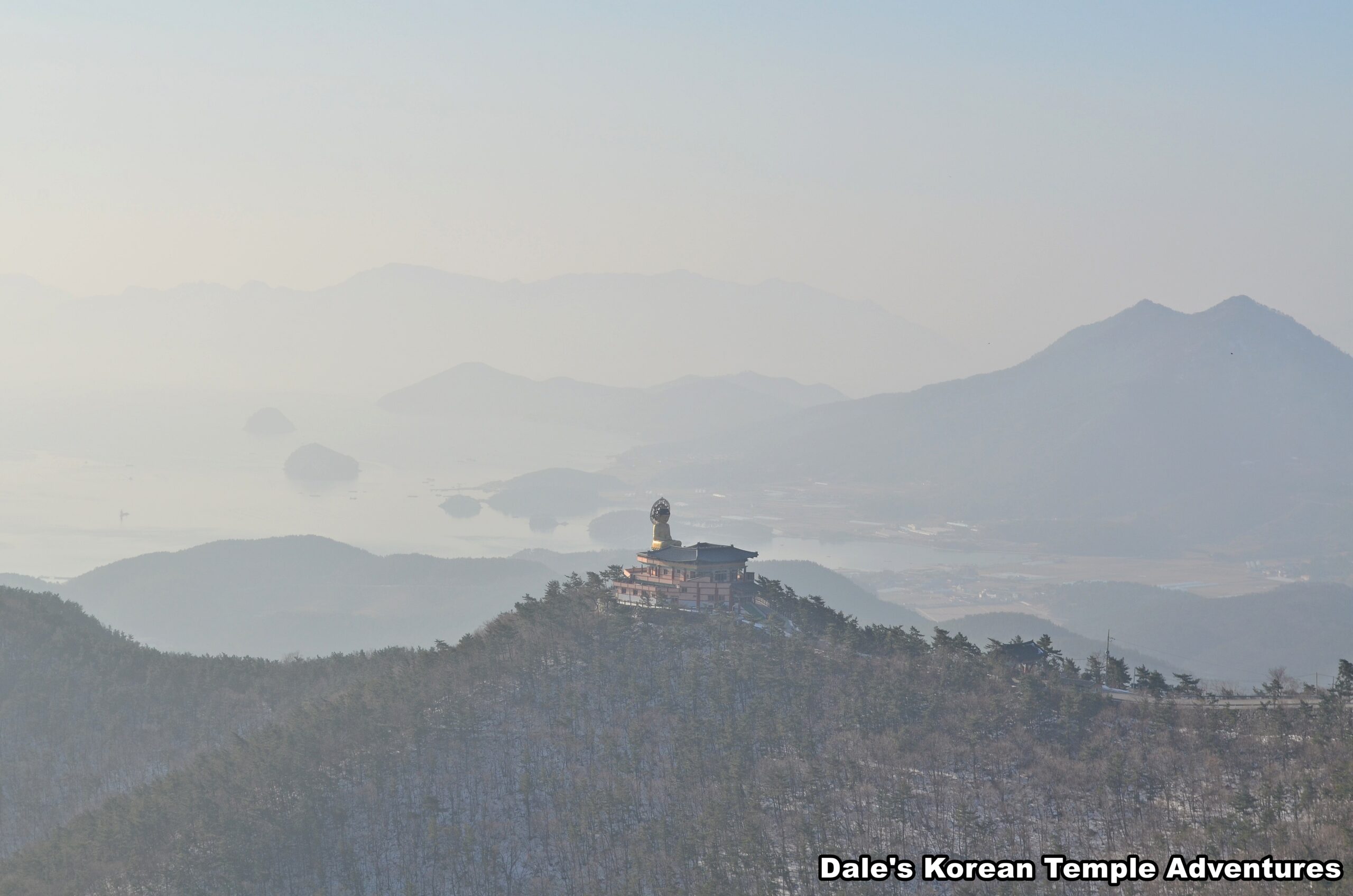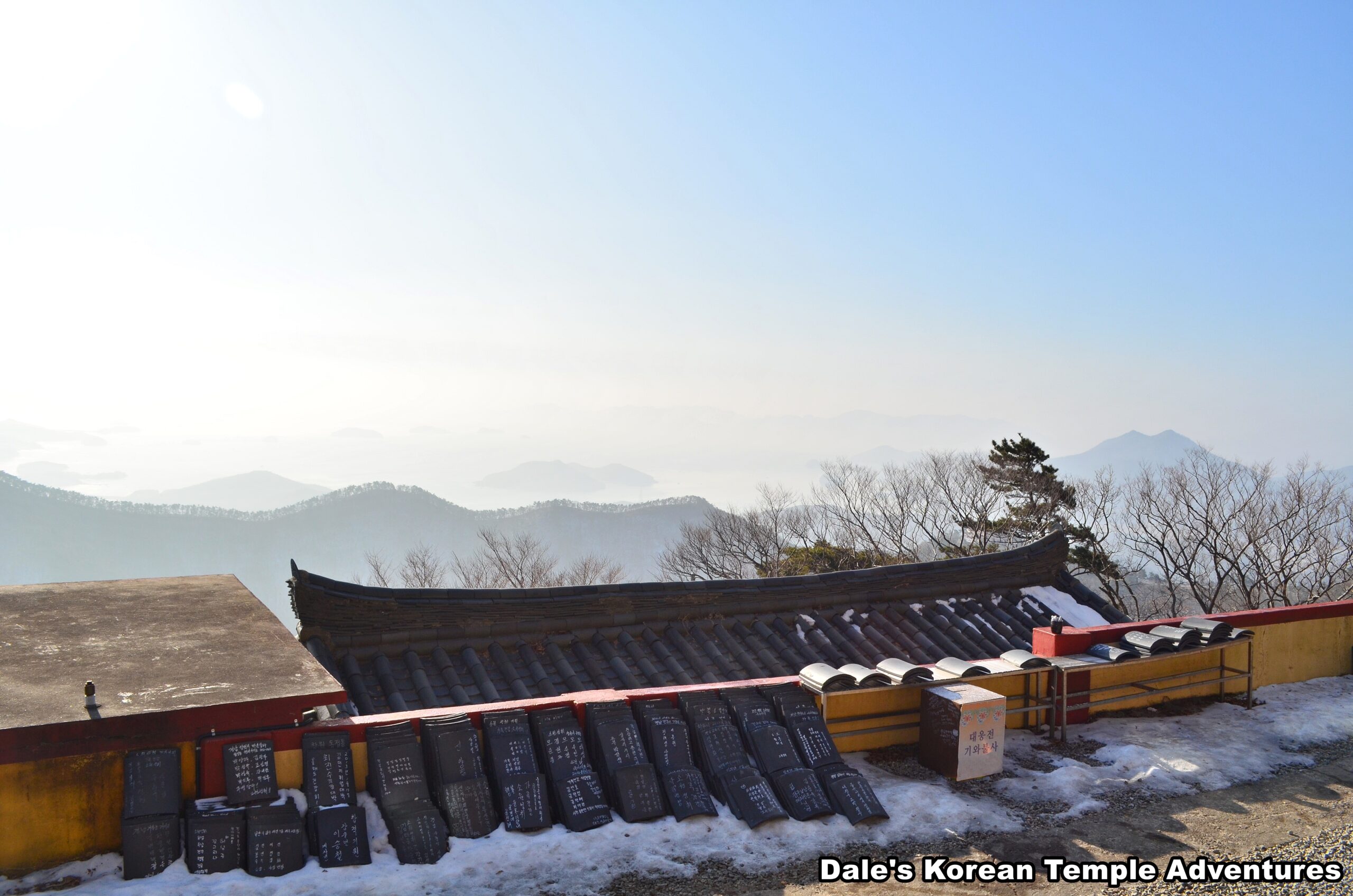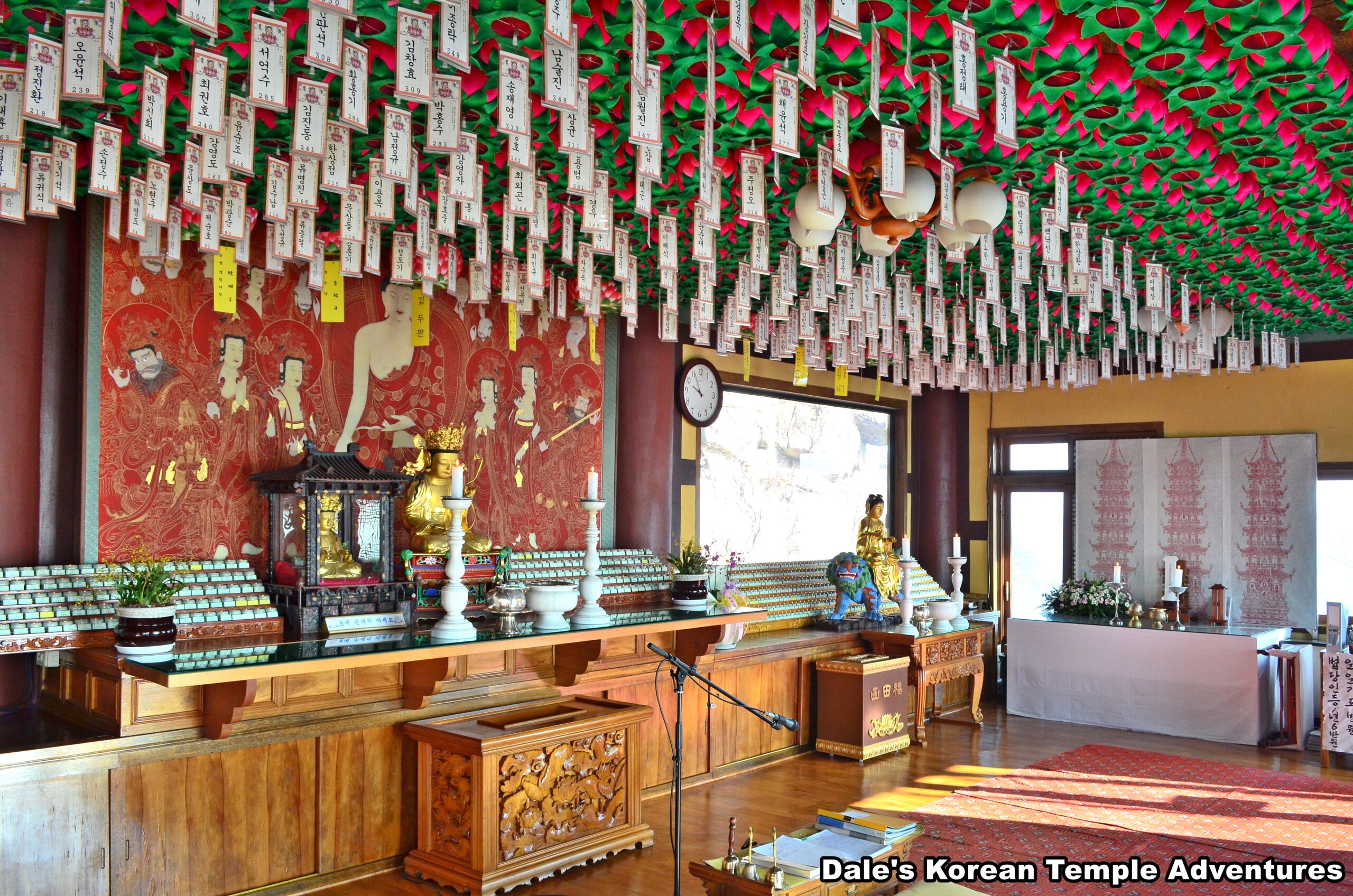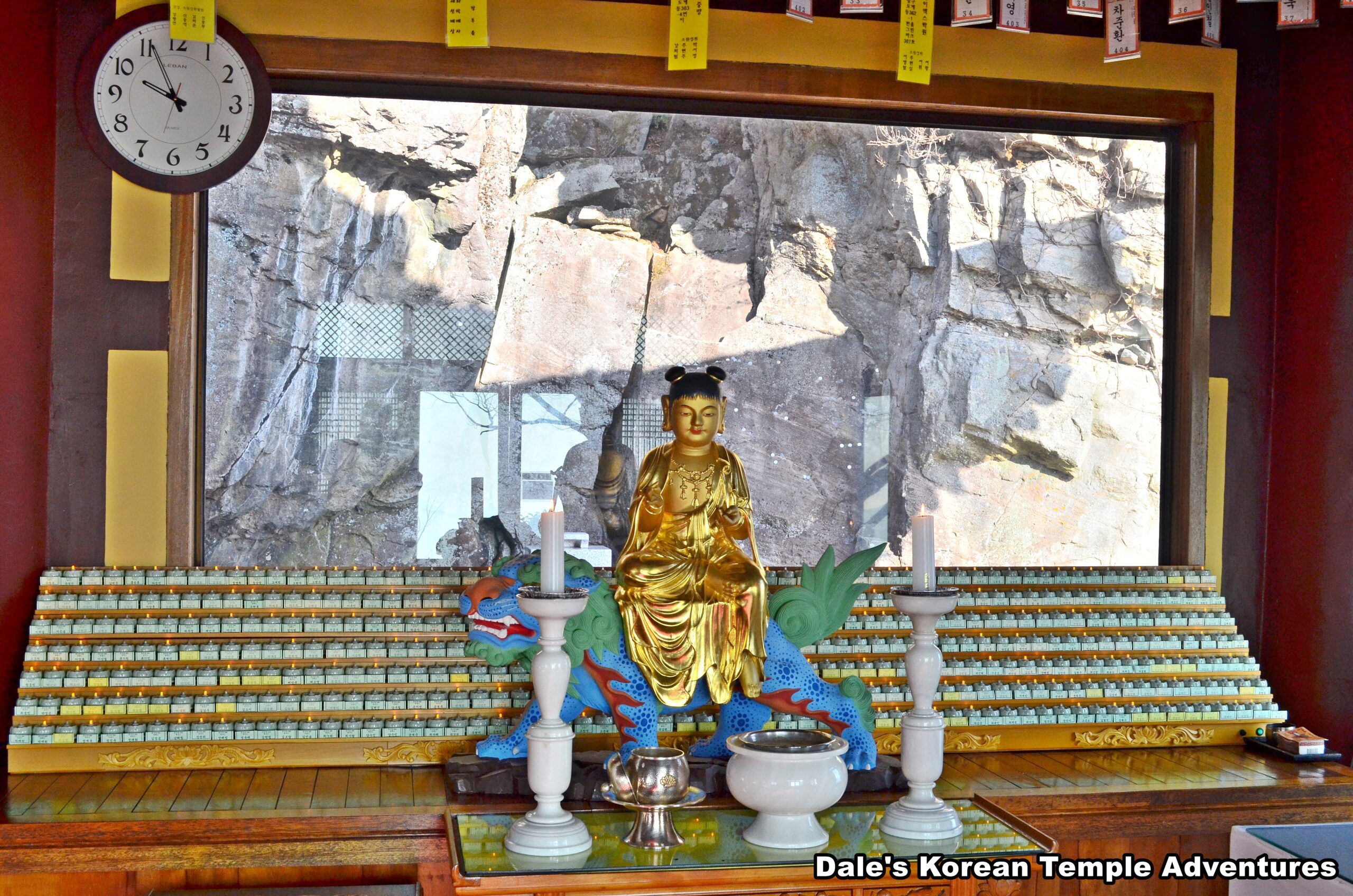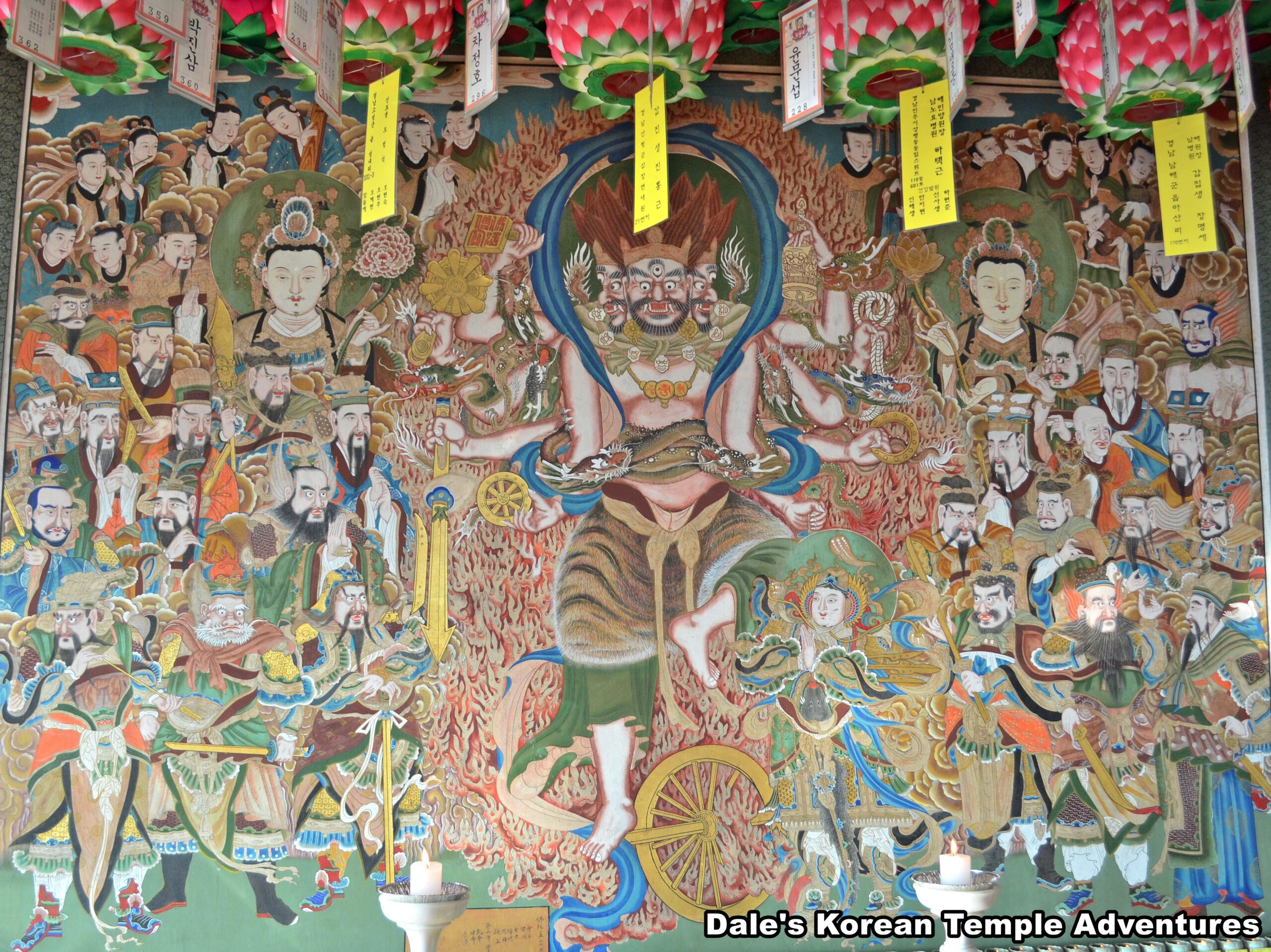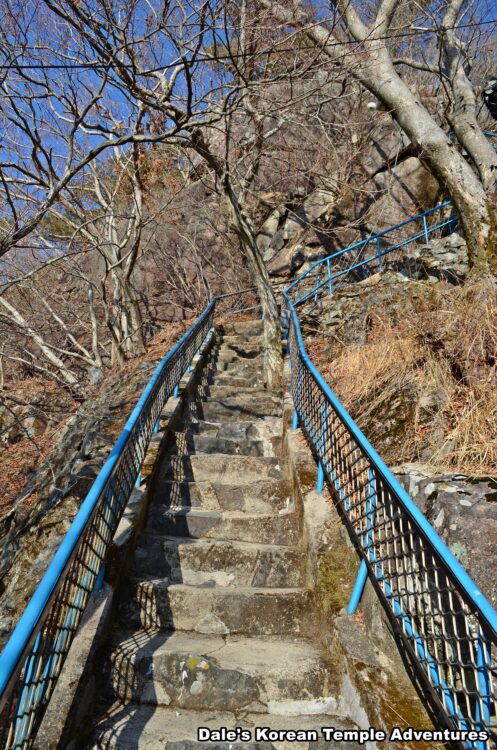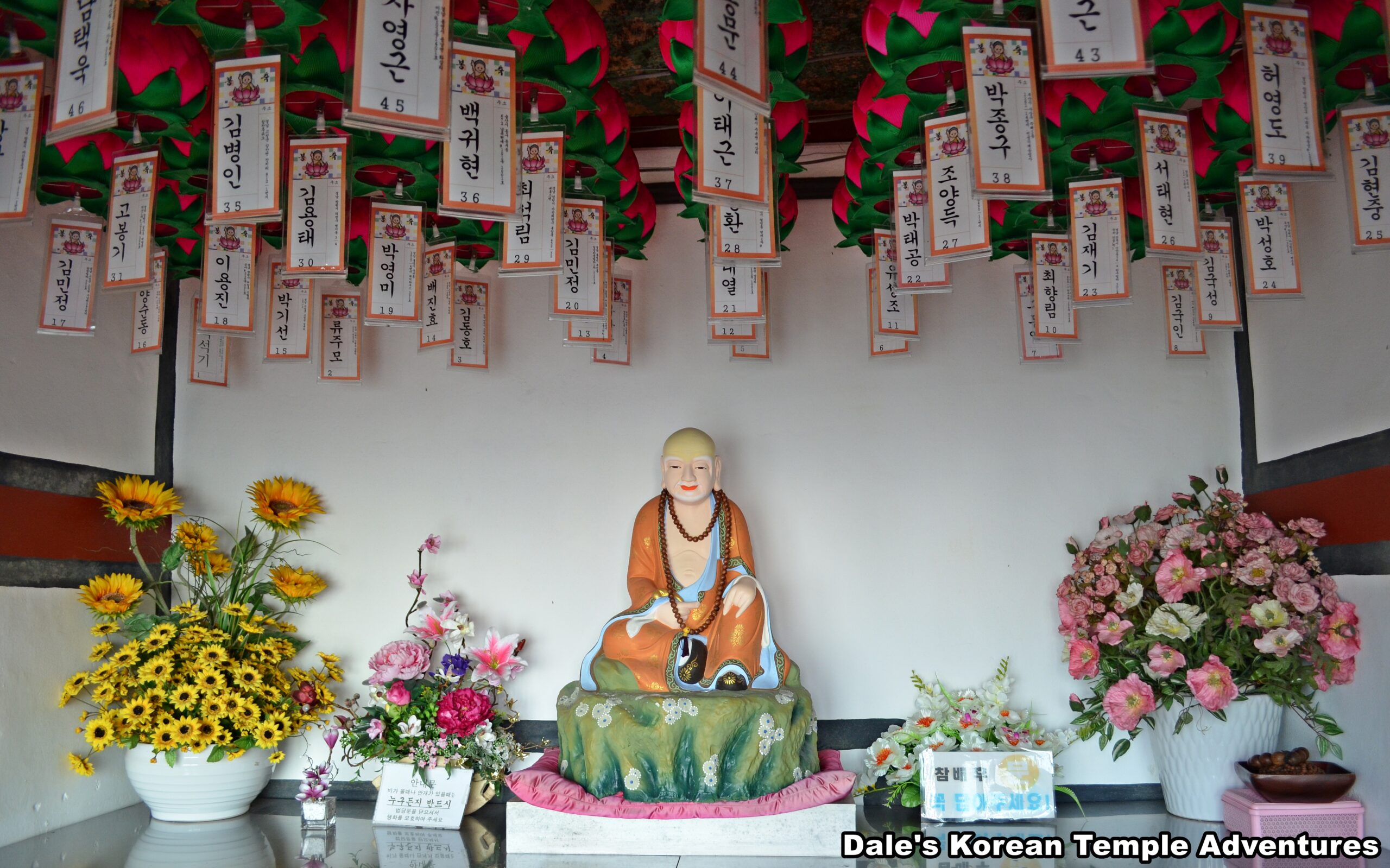Munsuam Hermitage – 문수암 (Goseong, Gyeongsangnam-do)
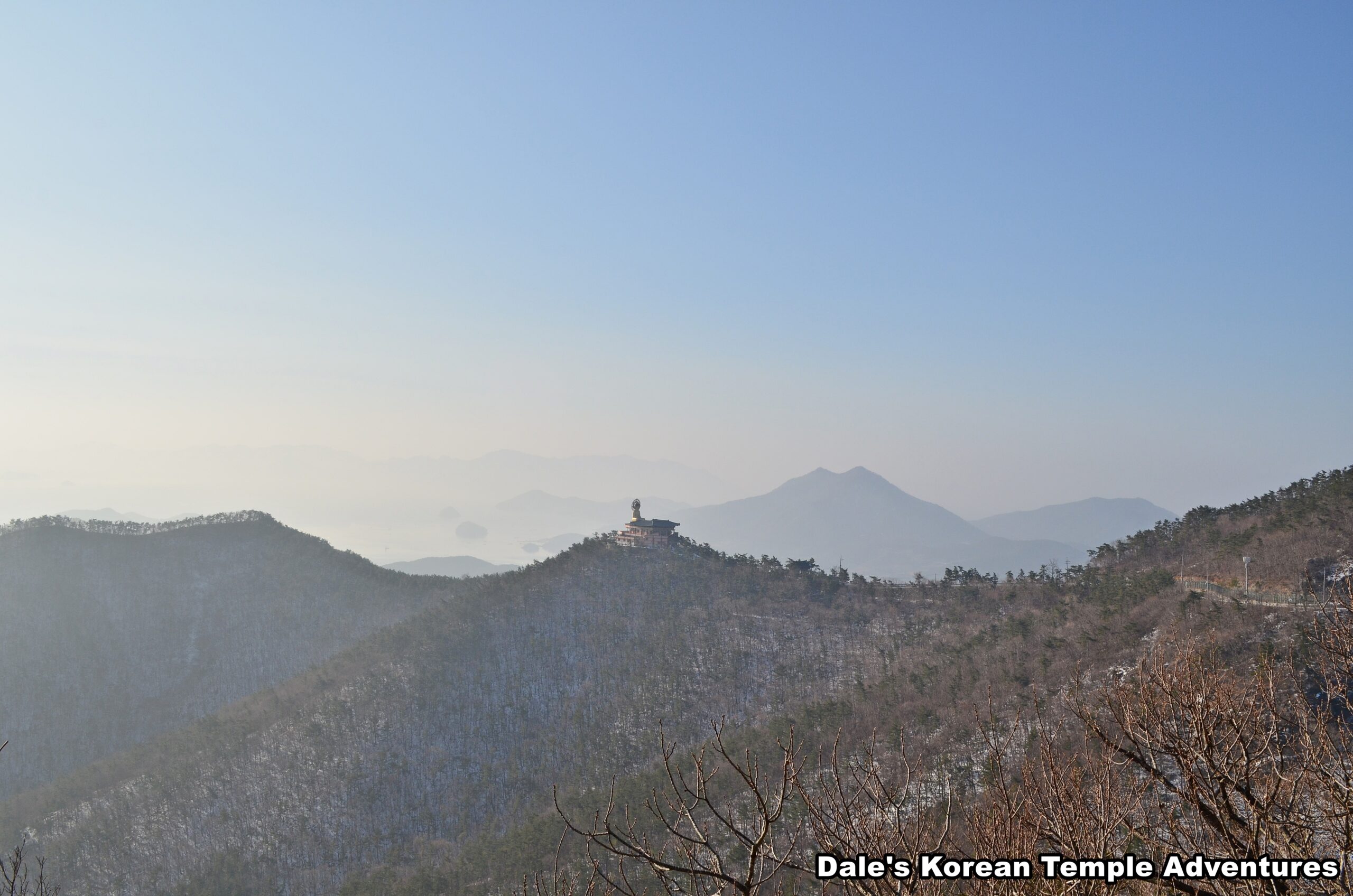
Hermitage History
Munsuam Hermitage is located in western Goseong, Gyeongsangnam-do. The hermitage is named after Munsu-bosal (The Bodhisattva of Wisdom). Munsuam Hermitage was first established in 688 A.D., when the famed monk Uisang-daesa (625 – 702 A.D.) built it. Uisang-daesa was led to the top of Mt. Muesan (545.6 m) by Munsu-bosal and Bohyeon-bosal (The Bodhisattva of Power). The two Bodhisattvas appeared as beggars to Uisang-daesa. Uisang-daesa had a dream in which a Buddhist devotee foretold the coming of these two Bodhisattvas. Outside of the hermitage’s foundation, very little is known about it through the centuries. The hermitage shrine halls are modern creations, and the stupa (budo) that houses the sari (crystallized remains) of the monk Cheongdam was placed on the hermitage grounds in 1973.
Munsuam Hermitage has one of the most scenic views in all of Korea. The hermitage faces towards the south and the dozens of tiny islands that dot the South Sea. And between the hermitage and the sea are rolling waves of twisted red pines along the neighbouring ridgelines. Crowning the neighbouring mountain top to the south, and a little lesser in elevation, is Bohyeonsa Temple, which is named after the Bodhisattva that also assisted Uisang-daesa to the top of the mountain. So with the South Sea, the rolling ridgelines, the neighbouring Bohyeonsa Temple, the views from Munsuam Hermitage are simply breath-taking.
Hermitage Layout
You first approach Munsuam Hermitage up a zig-zagging road that winds its way up the side of the sloping mountain. When you finally do arrive at the hermitage grounds, you’ll notice that most of the shrine halls are precariously placed on the face of the mountain. The second thing you’ll probably notice is the amazing view. And rather remarkably, all of this can be seen just from the hermitage parking lot.
Passing by a cute collection of wood carvings, you’ll first encounter the Cheonbul-jeon Hall at Munsuam Hermitage to your left. Inside the Cheonbul-jeon Hall are wall-to-wall statues of the Buddha. And resting under the main altar’s red canopy (datjib) is a triad centred by Seokgamoni-bul (The Historical Buddha). This statue is joined on the main altar by Jijang-bosal (The Bodhisattva of the Afterlife) and Gwanseeum-bosal (The Bodhisatva of Compassion). Completing the artistic interior of the Cheonbul-jeon Hall are a collection of Nahan (The Historical Disciples of the Buddha) paintings on the ceiling of the shrine hall.
As you make your way from the lower courtyard that houses the Cheonbul-jeon Hall, towards the upper courtyard, you’ll pass by a storage building and an observation deck. It’s from this observation deck, which is also where the stupa (budo) that houses the partial remains of Cheongdam, that you’ll get the best view of the South Sea off in the distance. On the observation deck, you’ll also find a tortoise-based stele (biseok) and a stone statue dedicated to Seokgamoni-bul.
Further up the pathway, and now standing in the upper courtyard at Munsuam Hermitage, you’ll find the main hall. The exterior walls to this hall are adorned with beautiful Shimu-do (Ox-Herding Murals). As for the interior, and sitting all alone on the main altar, is an image of Gwanseeum-bosal. To the left of the main altar is a shrine with a standing statue dedicated to Jijang-bosal. And on the far left wall is a uniquely painted Shinjung Taenghwa (Guardian Mural). And to the right of the main altar is a statue of a youthful Munsu-bosal riding a blue lion. This statue is backed by a panel of glass that looks out onto a neighbouring mountain crevice, which is where a statue of Munsu-boal miraculously appeared to Uisang-daesa. And on the far right wall is a memorial shrine for the dead.
To the right of the main hall at Munsuam Hermitage is another observation deck that looks out more towards the rolling ridgelines of the neighbouring mountains. And to the left of the main hall are the monks’ dorms. And it’s from out in front of this building that you get some more spectacular views of the sea and the tiny islands off in the distance.
The final shrine hall that visitors can explore at Munsuam Hermitage is the Dokseong-gak Hall. This shaman shrine hall is situated up a treacherous mountain pathway. In fact, a portion of the mountain’s rocky face has been cut away to allow visitors access to this rather hard to reach shrine hall. Once you do finally arrive at the shaman shrine hall crowning the hermitage grounds, you’ll be greeted by a solitary image of Dokseong (The Lonely Saint) inside the Dokseong-gak Hall.
How To Get There
From Goseong, you’ll need to take a taxi to get to Munsuam Hermitage, as there are no buses that go directly to the hermitage. The taxi ride will be around 13,000 won from the Goseong Intercity Bus Terminal. And the ride should take about twenty-five minutes (one way). Just make sure you hang onto your taxi, because it’s a long walk back to the terminal from Munsuam Hermitage.
Overall Rating: 8.5/10
Without a doubt, Munsuam Hermitage is one of the most beautifully located Buddhist sites in Korea right up there with Boriam Hermitage in Namhae, Gyeongsangnam-do and Hyangiram Hermitage in Yeosu, Jeollanam-do. Adding to the hermitage’s scenic location is the crowning Dokseong-gak Hall and the main hall at Munsuam Hermitage. While lesser visited, Munsuam Hermitage is an absolute must see!

